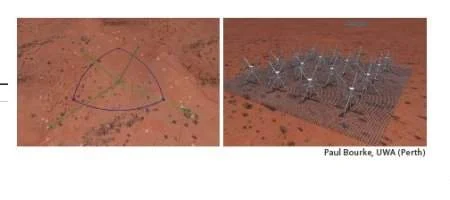A GPU-based radio telescope array in the Australian outback has managed to process 20TFLOPS of antennae correlation using just 20kW of diesel generated power. The Murchison Widefield Array (MWA) – which has no moving parts – is completely dependent on “prodigious” GPU compute power to create real-time, wide-field images of the radio sky.
According to Harvard researcher Hanspeter Pfister, the MWA was designed to help cosmologists map matter in the universe after the Big Bang, when the earliest stars, galaxies and quasars formed. The array is also expected to track the sun, with a particular focus on solar storms and shifting solar magnetic fields.

However, the MWA requires an incredible amount of on-site compute power to process enormous amounts of data.
“The MWA has [hundreds of gigabytes] a second feeding into an Nvidia GPU cluster in real-time. It computes an image every 8 seconds,” explained Pfister. “We observed a 10X improvement over typical CPU performance with Nvidia GPUs, which is helping to make this project possible.”
The MWA currently comprises 32 antenna “tiles” which form a high fidelity imaging array in the 80-300 MHz frequency range. However, the array will eventually feature 8,000 dual-polarization dipole antennas arranged as 512 tiles, each a 4×4 array of dipoles.

As the array has no moving parts – all telescope functions – including pointing, are performed by electronic manipulation of dipole signals. Every dipole contains information from ~4 steradians of sky centered on the zenith and performs an analog beamforming operation, which narrows the field of view to a fully steerable ~25 degrees at 150 MHz.






